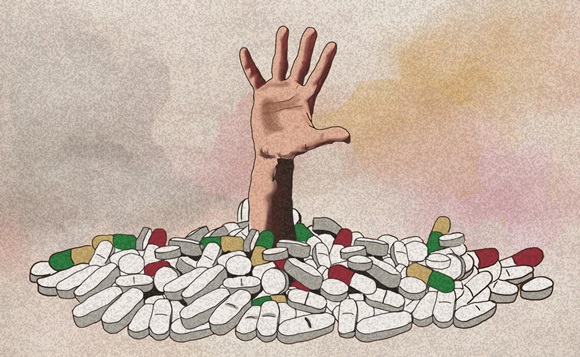A GENERATION IN CRISIS

 BY ANNIKA JONKER – Opioids can be found administered to patients before and after surgical procedures or even given to a dental patient for a mild toothache. The amount of opioids prescribed in America has nearly quadrupled since 1999, but there has been no significant change in levels of pain that people report – so how then did opioid overdoses become the leading cause of injury death in the United States? Opioids is a category of drugs that includes heroin, methadone and prescription painkillers such as OxyCodone. Over the past two years, Congress has been engrossed with the opioid epidemic, trying to find solutions to the worst drug epidemic in US history since the HIV epidemic from the 1980s – and they’re taking a novel approach to controlling this epidemic compared to what they have done in the past.
BY ANNIKA JONKER – Opioids can be found administered to patients before and after surgical procedures or even given to a dental patient for a mild toothache. The amount of opioids prescribed in America has nearly quadrupled since 1999, but there has been no significant change in levels of pain that people report – so how then did opioid overdoses become the leading cause of injury death in the United States? Opioids is a category of drugs that includes heroin, methadone and prescription painkillers such as OxyCodone. Over the past two years, Congress has been engrossed with the opioid epidemic, trying to find solutions to the worst drug epidemic in US history since the HIV epidemic from the 1980s – and they’re taking a novel approach to controlling this epidemic compared to what they have done in the past.
In 2014 alone, more than 47,000 Americans died due to opioid abuse – which averages to 125 people a day. Compare this to an average of 34,000 people who die in car crashes or the 34,000 people who die from gun violence a year. Around 2 million Americans abuse drugs, a number that has tripled since 2000 and, according to the National Institutes of Health Survey, 75% of whom never receive treatment. Congress is focusing on tackling the epidemic not by implementing harsh anti-drug criminal justice penalties, but by drafting initiatives focused on public health and health awareness. In May of 2016, the House of Representatives passed 18 bills related to the opioid epidemic with its biggest debate being how to fund treatment and prevention programs for opioid abusers. Congress isn’t certain on how to address the scale of the problem or how to appropriate enough money for it, but thus far, all parties are focused on expanding access to medication-assisted treatment, prescription training for doctors and providing overdose-related training for first responders. The main concern is funding. President Obama asked for $1.1 billion. However, Democrats and Republicans argued that regardless of how much money is appropriated, there will have to be reductions in other programs or increases in the national revenue.
While the national status of the opioid epidemic is being debated on Capitol Hill, individual states are attempting to minimize the scale of the epidemic by placing limits on opioid prescriptions. A major concern for physicians is that patients are becoming addicted to their opioid medications after having been prescribed an inappropriate amount for an excessive amount of time. When a patient becomes dependent on an opioid prescription, the patient’s body needs higher doses of the medication to have the same effect. What makes opioid overdoses capture the attention of Congress is that, unlike cocaine addictions or related drug addictions, opioid overdoses ultimately circle back to the physicians. As seen in New Hampshire and Massachusetts, states are encouraging doctors to prescribe alternative pain treatments and are trying to require all insurance plans to cover substance-abuse treatment.
The opioid epidemic snuck up on Congress; they were late to the game on passing bills to minimize it, but the future is promising. Looking forward, discussions on solutions and treatments for opioid overdoses are rattling the nation to find a way to control the epidemic that has become the leading cause of injury death in America.
